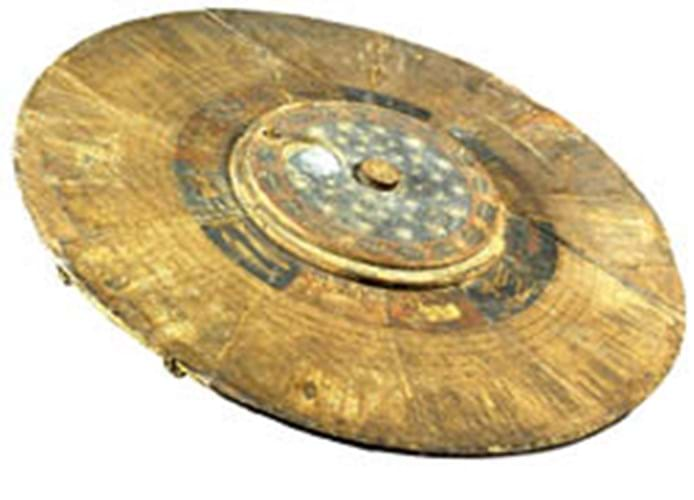
Catalogued as "almost certainly the largest and finest extant example of a computistical instrument used for astronomical and mathematical calculations", the Astronomical Calendar of San Zeno, a 15th century ancestor of the analogue computer, was offered by Sotheby's on July 6 as part of this summer's modest selection of illuminated manuscripts and miniatures.
Comprising three pine discs connected by a central spigot and overlain with vellum, it is painted to the outer edge of the largest 4ft 2in (1.28m) diameter disc with calendar entries, then moving inwards, with nine columns of figures in Arabic numerals and 12 large miniatures of the astrological signs.
On the central small disc is a painted night sky with an offset aperture that reveals phases of the moon painted on the middle disc.
This calendar of volvelle form was produced for the Benedictine monastery of San Zeno in Verona and hung in the chapter house in 1455, the year in which the abbot also commissioned a monumental altarpiece for the basilica of San Zeno from Andrea Mantegna. Some 200 years later this religious community was decimated by plague, but in the mid 18th century, a local antiquarian recorded it as still hanging on the wall of the chapter house in the now near-deserted monastery.
In 1770 the monastery was suppressed, the basilica became a parish church and the remaining buildings and their contents were sold off. Looting and further destruction followed with the Napoleonic Wars, but somehow it survived - albeit with major cracks to the wooden discs, scratching, scuffing and fraying to the vellum, and centuries of accumulated dirt and resultant discolouration.
The volvelle, of which this is the largest surviving example - perhaps the largest ever made - is a relative of the astrolabe and the planisphere, but instead of measuring distances or angles, is designed to cross-reference sets of data.
Volvelles have their origin in Arabic science and although Western examples are known as early as the 13th century, they were not commonly found until the advent of printing and the appearance of Peter Apian's Astronomicum Caesarum in 1540, a remarkable work which made great use of such volvelles or moveable discs with pull-cords in its illustrations and diagrams.
The Padua-Verona region has produced a significant number of the surviving examples, as in the 15th and 16th centuries the universities of north eastern Italy were home to much early scientific research. Georg von Peurbach lectured on astronomy at Ferrara; his student, Johannes Muller, or Regiomontanus, taught in Padua, and Galileo moved there in 1592 to lecture on geometry, mechanics and astronomy.
The Sotheby's cataloguer points out that this great example stands quite apart. The vast majority of surviving volvelles occur in manuscripts that would have seen restricted use in private or institutional libraries, but this one was made for public display and "...must have caused as much excitement within the early scientfic communities around Verona as the Prague astronomical clock did in Bohemia".
Every emperor, pope and dignitary to visit Verona, it is suggested, must have stood in the chapter house and gazed upon it, and scores of mathematicians and astronomers, Galileo included, would have travelled to Verona to study it and take notes.
Cracked and dirty, the vellum coverings rubbed and frayed, the Astronomical Calendar of San Zeno was cautiously valued at £40,000-60,000, but that estimate was swept aside as it moved on to sell at £210,000.
By Ian McKay




